Subgenus Esula explained
Subgenus Esula has some confusing terminology associated with it because of its odd morphology. In a key like the one in Flora of North America, you're bound to stumble on terms like pleiochasial and dichasial. This is designed to explain those terms and help you understand the overall morphology.
Phyllotaxy (leaf arrangement):
Let's start with the basics. A bract is a modified leaf subtending (directly below) a reproductive structure. This can be an inflorescence, a flower or a cyathium (you can read all about the cyathium here). With some exceptions (like E. trichotoma), the plants have three sets of leaves (two sets of bracts): alternate (alternating; not grouped or paired at the same node) non-flowering leaves, whorled bracts subtending the entire inflorescence (pleiochasial bracts), and opposite (paired) bracts of the cyathia after the first one (dichasial bracts). If you want to get technical about it, the plants actually have three sets of bracts considering the cyathial bracts, but we won't get into that here. In the United States, there are two exceptions. One is E. trichotoma which has alternate dichasial bracts and the other is E. lathyris which has opposite leaves.
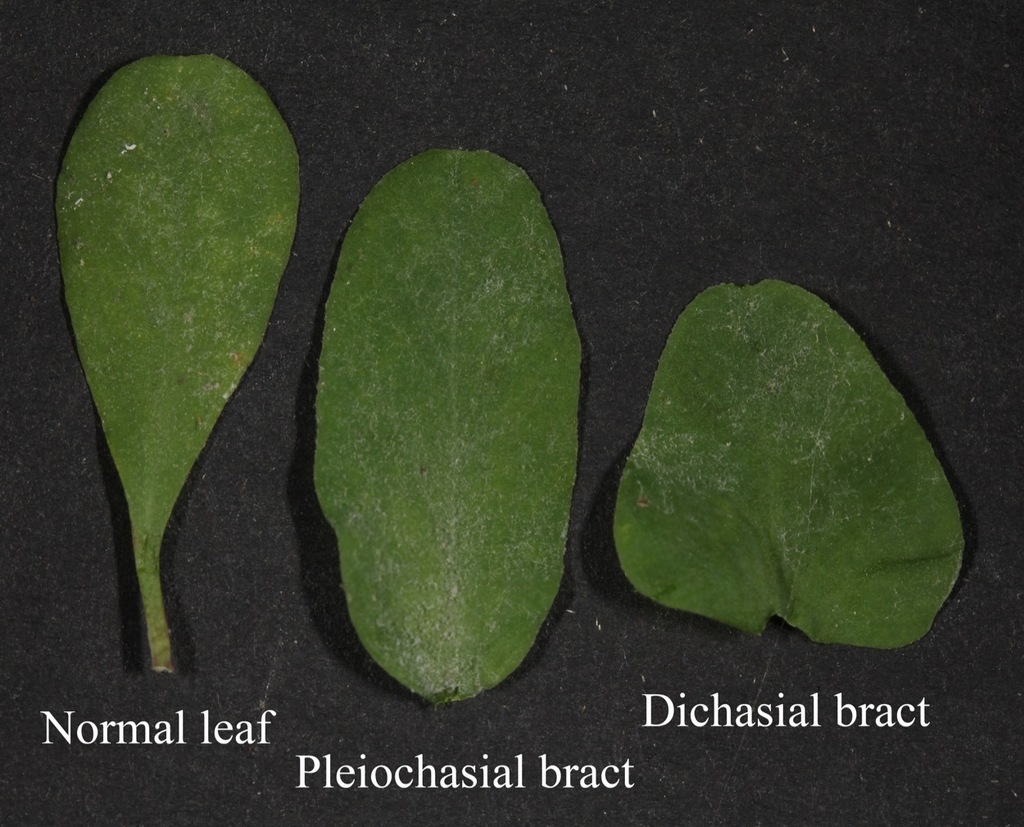
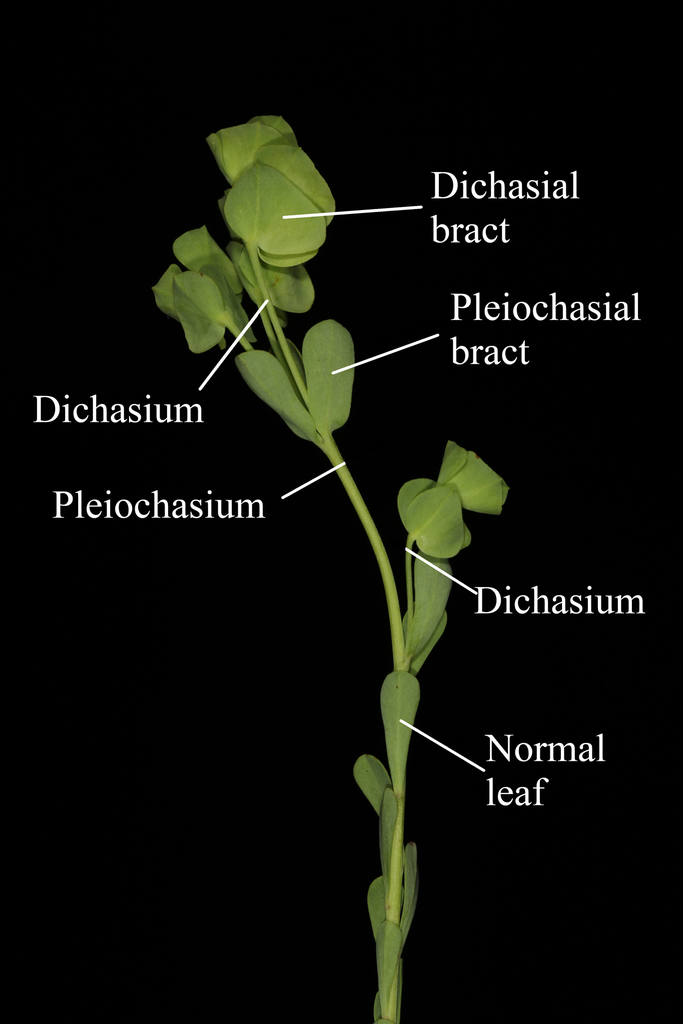
Left: Euphorbia helleri. Right: Euphorbia longicruris.
Cyathial glands:
There is a decent amount of diversity in the glands of these plants. In some, the outer edges are roughened (technically crenulate). In others, the glands are completely smooth. In most species in the United States, the glands have horn-like projections at the edges. These horns can be about the same color as the gland or white.

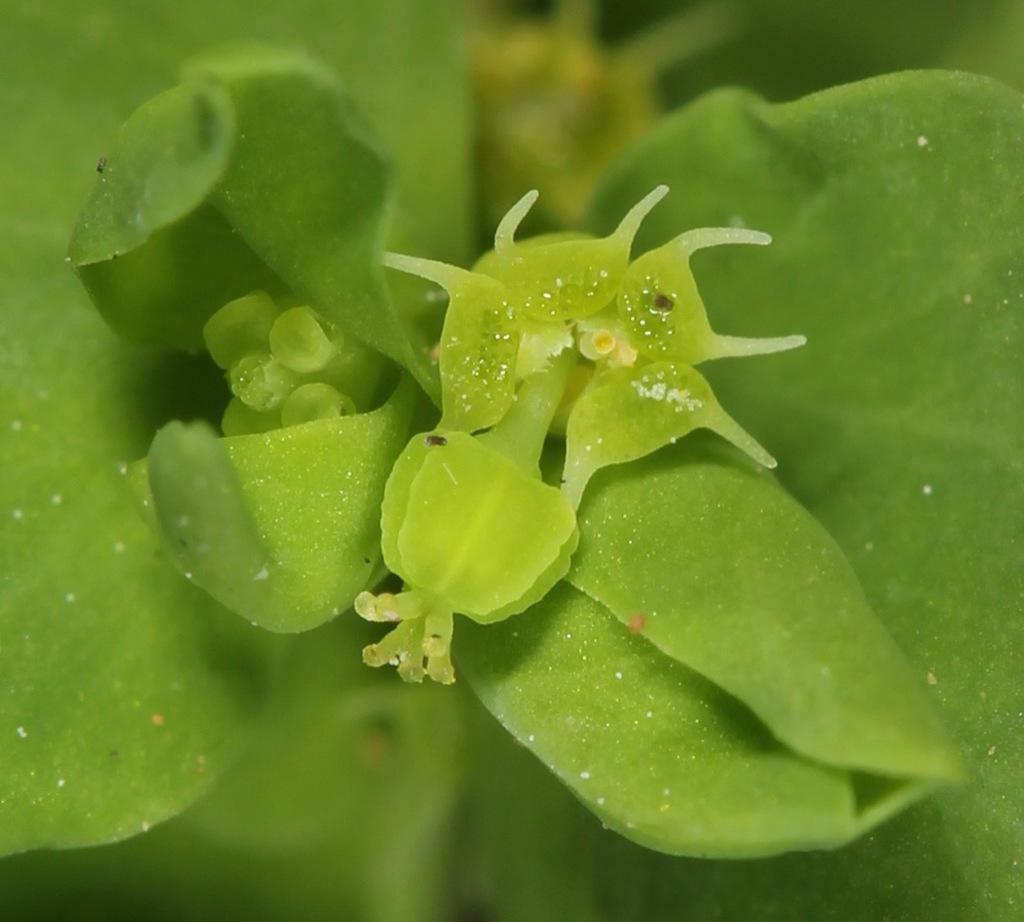
Left: Euphorbia spathulata, glands (yellow structures) without horns. Right: Euphorbia peplus, glands with horns.
Fruit texture:
There are three major categories of fruit texture: smooth, winged, and rough. In the United States, only E. peplus has winged fruits. These "wings" occur along the angles of the fruit where the fruit splits at maturity (along three lines of dehiscence). Rough fruits are a bit more complicated but most extreme in the case of warty fruits (most commonly seen in E. spathulata). Some are simply granulate (with many tiny bumps) as in E. cyparissias.
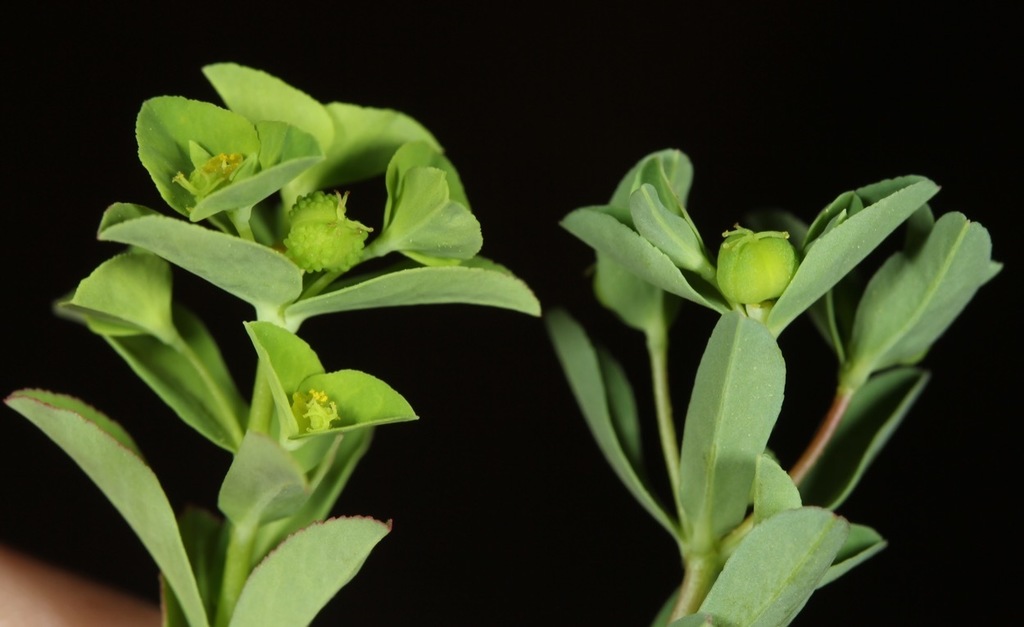
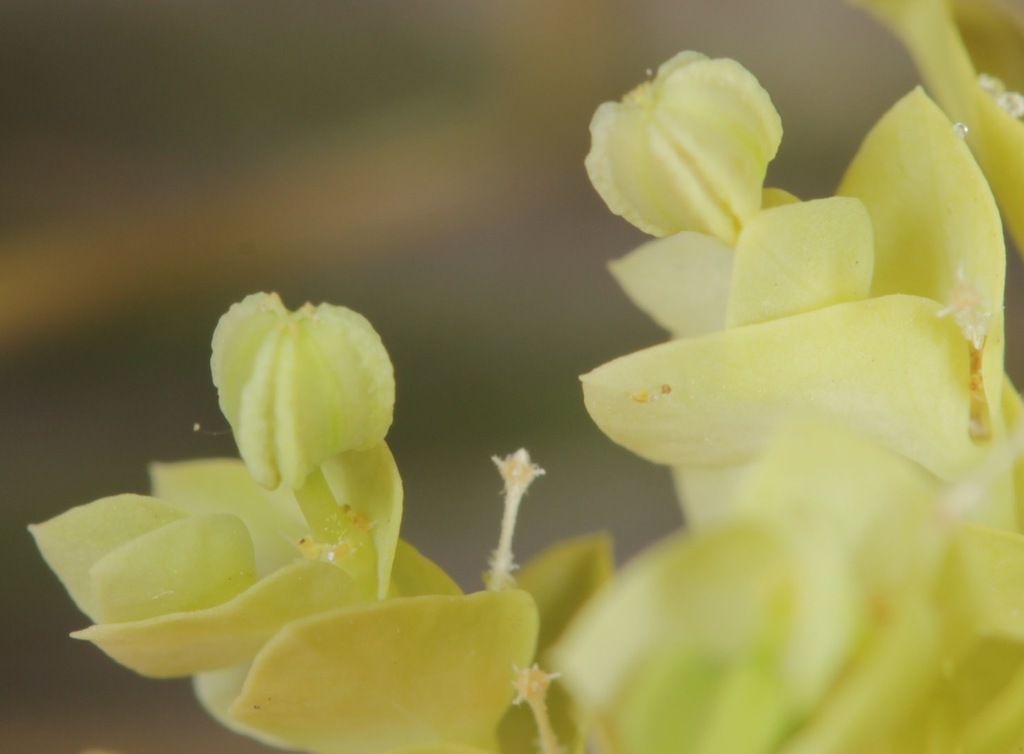
Left: Euphorbia spathulata (warty fruits) and E. texana (smooth fruits). Right: Euphorbia peplus (winged fruits).
Related posts:
Texas Euphorbias, Subgenus Esula
California Euphorbs of subgenus Esula





תגובות
Nathan, you certainly are a teacher! I'm bookmarking this. Thanks for sharing it with us.
Thank you for this! I've been enjoying the illustration, as well, in Riina et al. (2013), but this is a good simple breakdown.
הוספת תגובה